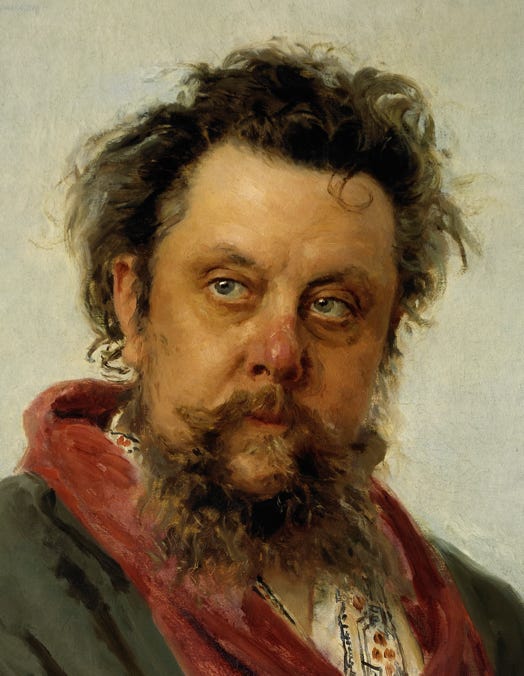

Modest Mussorgsky and the Mighty Handful
PROGRAM NOTES & COMMENTARY
Pictures at an Exhibition (orchestrated by M. Ravel)
Genre: Symphonic; Country: Russia (France)
Period: 19th Century
Completed in 1874 (orchestrated in 1922)
First performance: October 19, 1922, Paris (Koussevitzky, Conductor)
Among the allies that The Five found in other fields was the artist and architect Viktor Hartman, with whom Mussorgsky became close personal friends. Hartmann’s premature death at 39 stunned the composer and the entire Russian artistic community. The noted critic Vladimir Stassov organized a memorial exhibit of Hartmann’s work in February 1874, and it was under the inspiration of that showing of his late friend’s works that Mussorgsky conceived his Pictures at an Exhibition for piano.
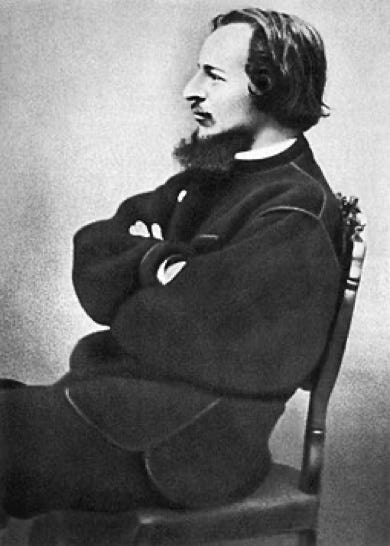
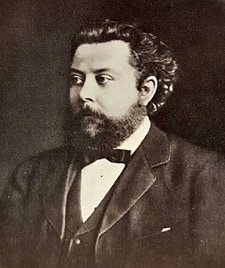
Il vecchio castello (The Old Castle) by Viktor Hartmann
Viktor Hartmann
Mussorgsky around the time of Pictures
Work on Pictures at an Exhibition progressed rapidly. Mussorgsky wrote to the music critic Vladimir Stasov:
My dear généralissime, Hartmann is boiling as Boris
(Boris Godunov, Mussorgsky’s masterpiece opera)—
Ideas, melodies, come to me of their own accord.
Like roast pigeons in the story, I gorge and gorge
and over-eat myself. I can hardly manage to put
it all down on paper fast enough. I am writing the
4th No.—the transitions are good (on the 'promenade'.
I want to work more quickly and steadily. My
physiognomy can be seen in the interludes.
So far I think it's well turned ...
Five days after finishing the composition, he wrote a tribute to Vladimir Stasov on the title page and dedicated the work to Stasov.
In terms of how the work was received, opinions varied. His admirers were endlessly enthusiastic, but many of Mussorgsky's friends—particularly his fellow composers—were genuinely perplexed. As they listened to the "newness" of his work, they shook their heads in confusion. Mussorgsky, sensing their uncertainty, seemed to realize he might have "gone too far." Without attempting to publish the pieces, he set them aside. Although composed very quickly—in three weeks (!)—the work did not appear in print until 1886, five years after the composer’s death.
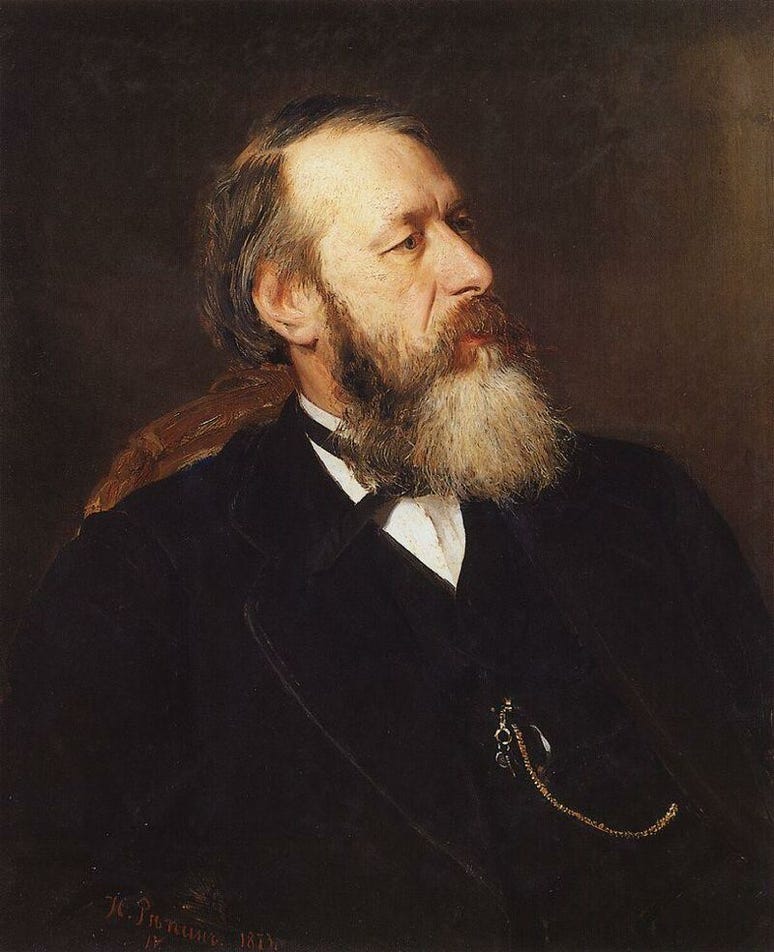
Vladimir Stasov, the highly influential Russian music critic who coined the term The Might Handful and who was the dedicatee
of Pictures at an Exhibition.
Original manuscript page from “Gnomus” in ˆPictures” (for piano). Click below to listen to the piano version and the orchestral version of the music on this page (the excerpt plays to the end of this movement)
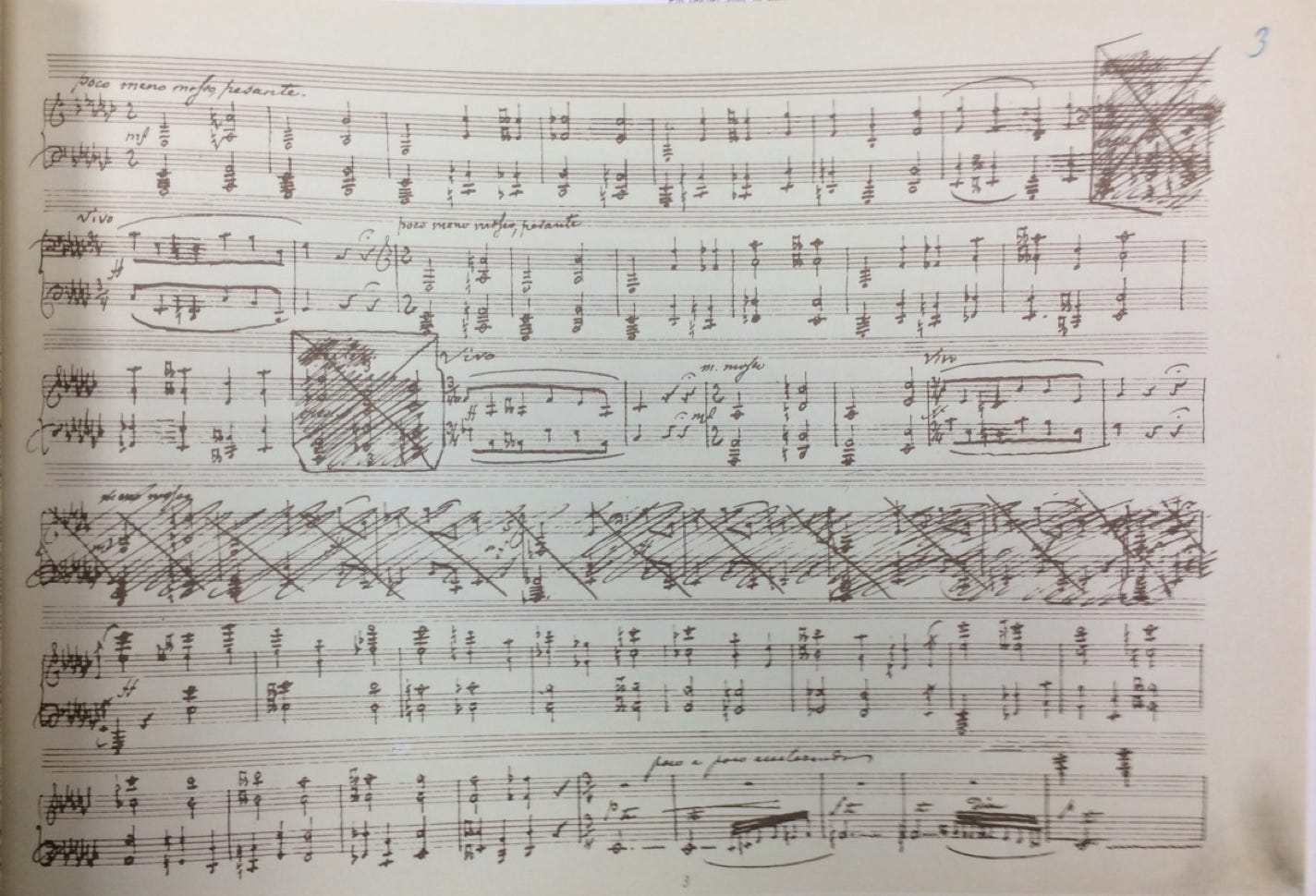
Piano
Orchestral
The Pictures
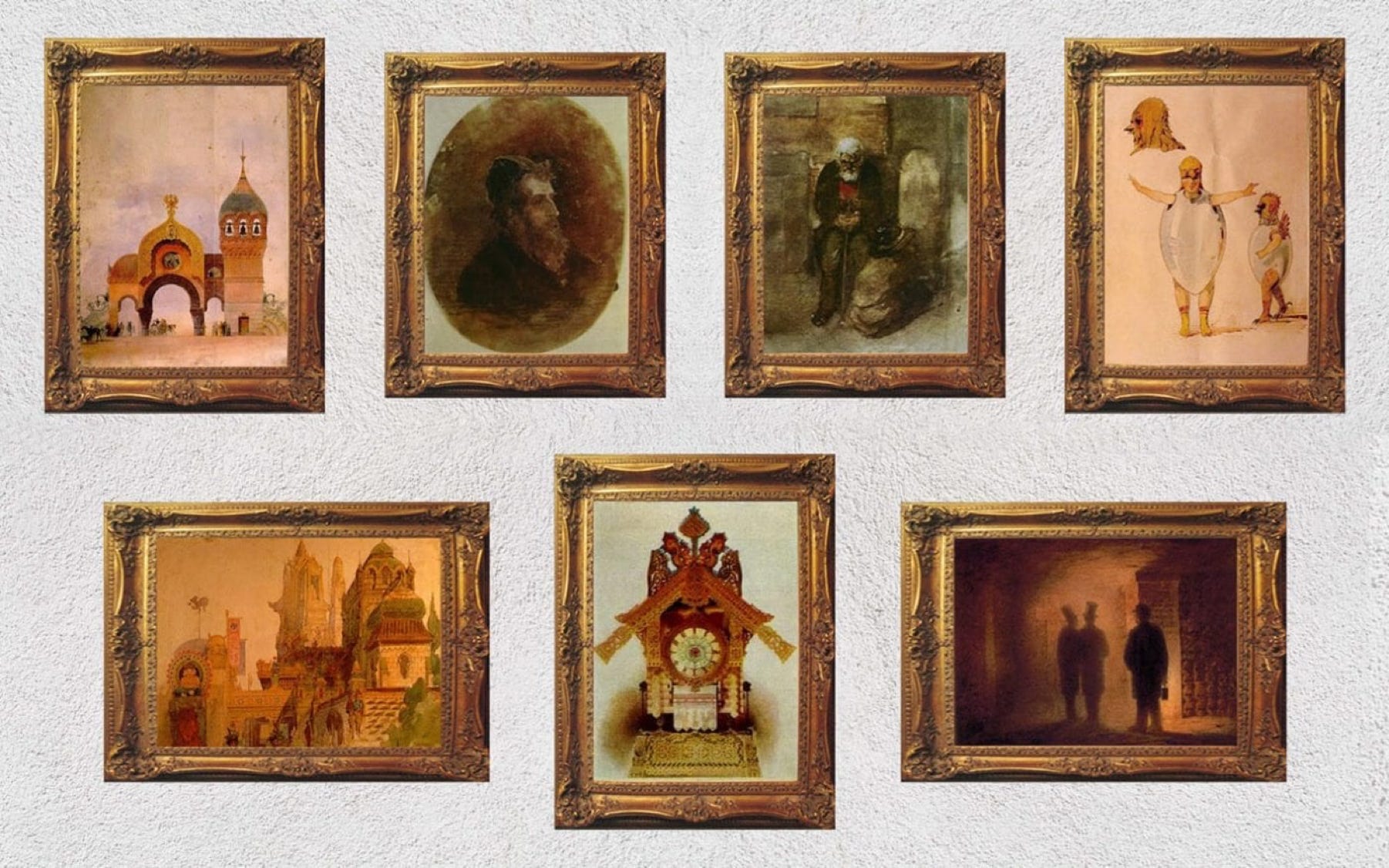
Of the ten works that inspired Modest Mussorgksy’s ten-movement work, images of four have been lost over time. Let’s go into detail on these seven extant works (one movement uses two pictures, hence 7 instead of 6).
The Old Castle (mvt. 2)
"Il Vecchio Castello" (The Old Castle) is a watercolor painting depicting a troubadour sorrowfully singing to his beloved in front of a medieval castle. The forlorn troubadour, unsuccessful in winning her heart, is portrayed through the melancholic sound of the alto saxophone. The piece concludes softly with steady, pulsing rhythms.

Ballet of the Unhatched Chicks (mvt. 5)
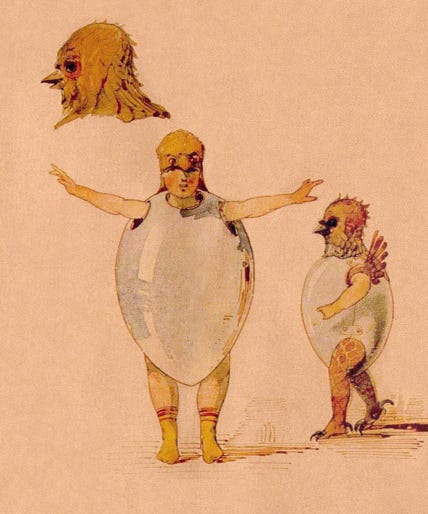
This is the sketch that inspired Mussorgsky’s Ballet of the Unhatched Chicks. The ballet featured children from the Russian Imperial Ballet School dressed variously as birds, butterflies and, as in this sketch, chicks still in their eggs. In this image performers are dresses as canary chicks, enclosed in eggs as in suits of armor. Instead of a head-dress, they wear canary heads, put on like helmets, down to the neck.
Click to play movement
Hartmann spent a month in Poland, focusing on sketching and painting around the town of Sandomir. Mussorgsky’s inspiration for his work likely came from two pencil drawings listed in the 1874 catalogue as Nos. 176 and 177. The first is described as "A rich Jew wearing a fur hat: Sandomir," and the second as "A poor Sandomir Jew." Both drawings were noted as being owned by Mussorgsky, making them the only artworks in the catalogue attributed to him. This movement in Mussorgsky’s suite was the only one he left untitled, and for a while, it was referred to as "two Polish Jews."
Two Polish Jews, One Rich, the Other Poor (mvt. 6)
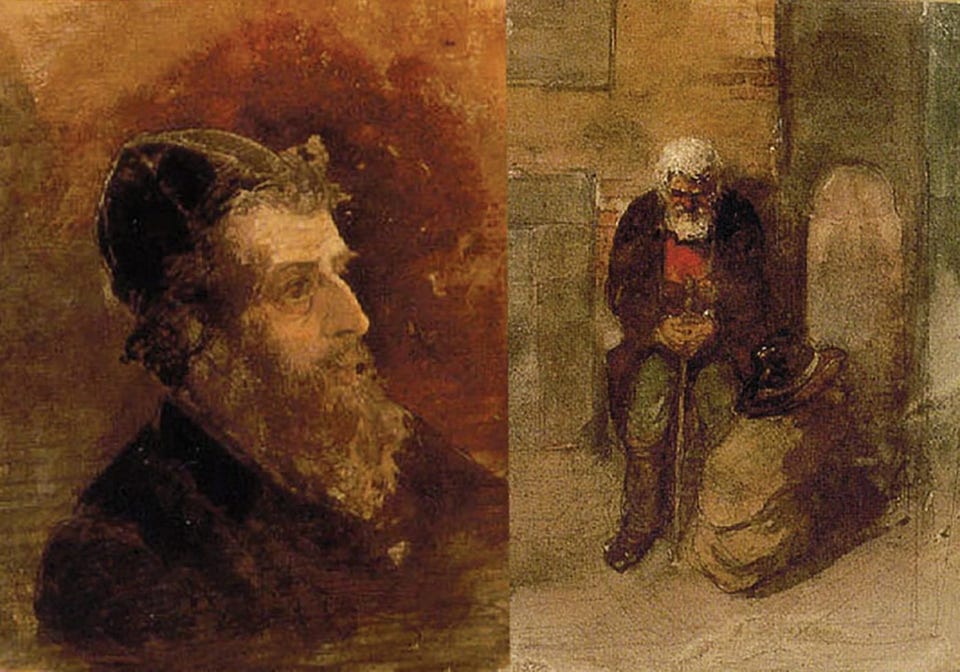
Catacombs (mvt. 8)

Hartmann, having graduated with honors from the Academy of Fine Arts, was granted four years of government-funded study abroad as part of his post-graduate education. He spent three of those years in France, where he created the drawings and paintings that would later inspire three of Mussorgsky's musical sketches: Tuileries, Limoges, and The Catacombs. The Catacombs piece depicts Hartmann himself in the Roman catacombs beneath Paris. The 1874 exhibition catalogue describes it as: "Interior of Paris catacombs with figures of Hartmann, the architect Kenel, and a guide holding a lamp."

Hartmann
The Hut on Fowl’s Legs (Baba Yaga) (mvt. 9)
Hartmann's drawing portrays a clock shaped like Baba Yaga’s hut, the eerie, supernatural figure from Eastern European folklore. Baba Yaga is commonly depicted as an old woman who flies in a mortar, wields a pestle, and dwells in a forest home that moves on chicken legs. The clock, designed in the Russian style of the 14th century, includes carved gables, rooster motifs, and intricate ornamentation inspired by textile and rope patterns—hallmarks of Hartmann’s architectural style.

A more modern version of Baba Yaga’s Hut
The Great Gate of Kiev (mvt. 10)
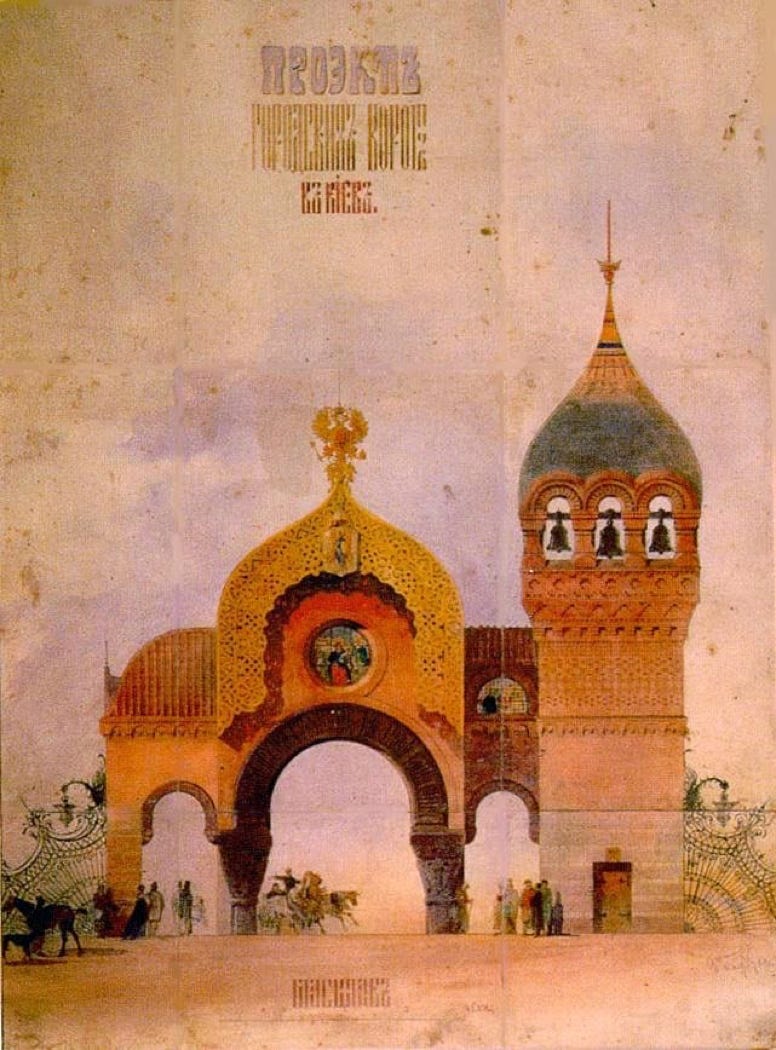
In 1869, Hartmann participated in a competition to design a gateway in Kiev, commemorating what Russian writers of the time, under the scrutiny of the Imperial censor, cautiously referred to as "the event of April 4, 1866"—the date when Emperor Alexander II narrowly escaped assassination in Kiev. Hartmann's design envisioned a grand gate in the old Russian style, with an archway supported by granite pillars mostly embedded in the ground. The top featured intricate Russian carvings, crowned by the imperial eagle. To the right of the gate stood a three-story belfry with a dome shaped like a Slavic helmet. Hartmann considered this design for the Great Gate of Kiev his masterpiece, and it caused a sensation at the time. Though it was never built due to the competition being canceled, the design became widely reproduced and famously inspired one of Mussorgsky's most celebrated compositions.
The Promenades
Pictures begins with, and several of its sections are preceded by, a striding Promenade theme – which is typically Russian in its irregular rhythm and modal inflection . Promenade is French for “a walk,” and “in modo russico” is Italian for “in the Russian style.” A kind of musical self-portrait, it depicts Mussorgsky walking into the great hall of the Imperial Academy. The Promenade melody reappears throughout Pictures as Mussorgsky walks from one work of art to another.

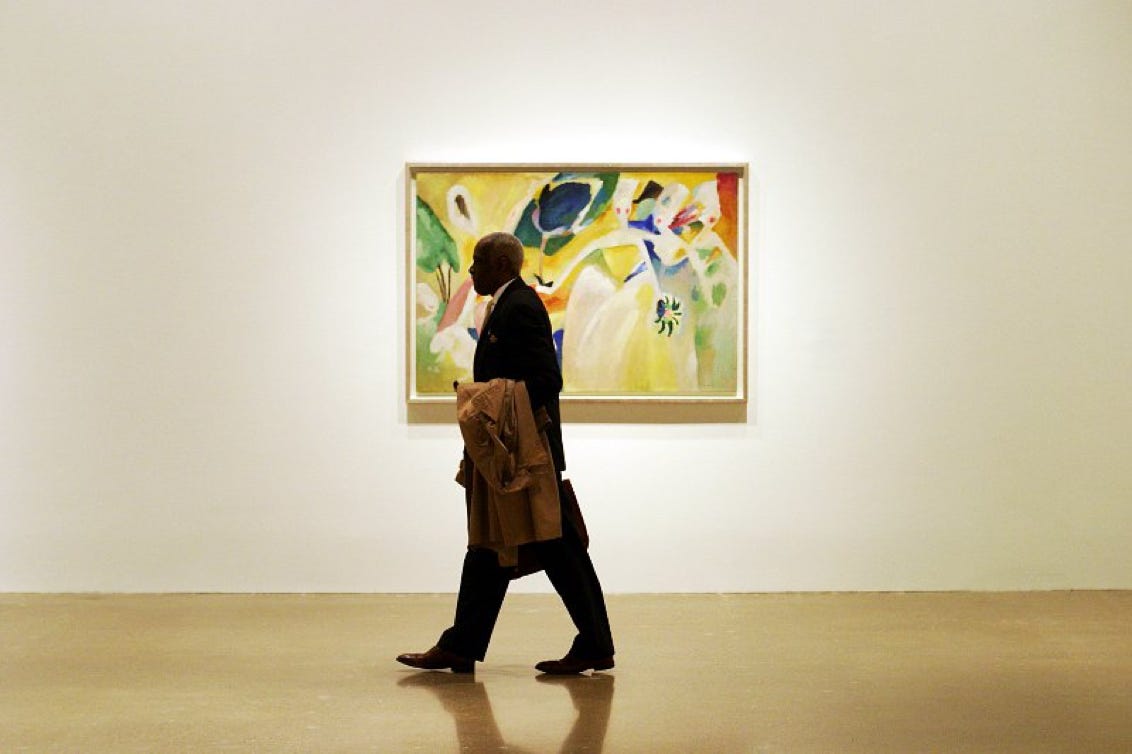
The Missing Pictures
The Gnome (mvt. 1)
The first movement of Pictures at an Exhibition is titled "The Gnome." Although the original Hartmann painting has been lost, it is believed to have depicted a grotesque nutcracker with large, menacing teeth. Mussorgsky vividly captures this unsettling image through music, employing a range of inventive techniques. "The Gnome" opens with abrupt, jagged melodic fragments that are erratic and dissonant, mirroring the awkward movements of the creature. A contrasting section introduces a descending melody accompanied by a dissonant, wavering rhythm. The third section alternates ominously between low and high pitches, building tension, while the final section crescendos into a loud, threatening conclusion. Elements from the opening reappear unexpectedly, maintaining a sense of unpredictability. Throughout the movement, sharp contrasts and surprises keep the listener on edge, with no moment of calm before the abrupt, dramatic finish.

Hartmann sketch for “The gnome”
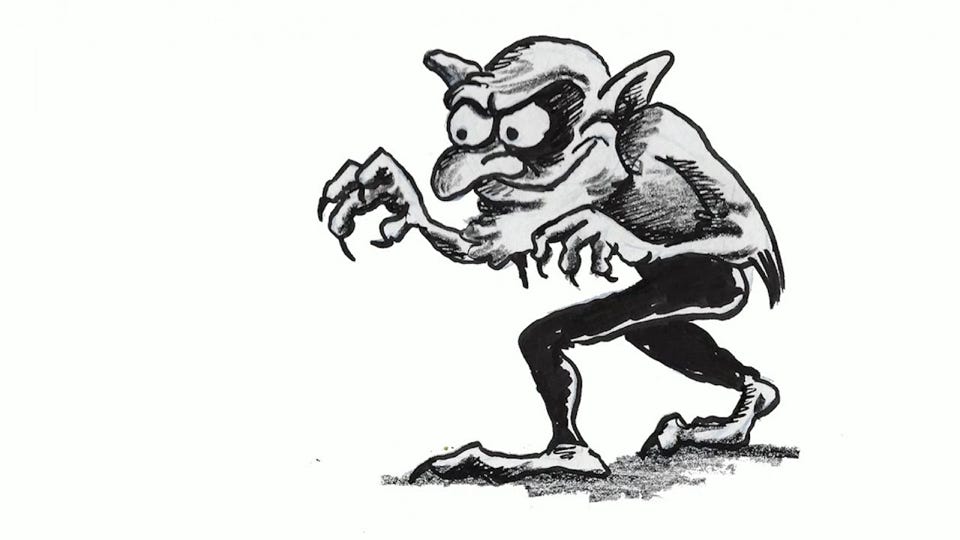
Leo’s version
Tuileries (mvt. 3)

The Tuileries Gardens were near the Louvre in Paris and Stasov recounted that the painting depicted “an avenue in the garden of the Tuileries, with a swarm of children and nurses”.
While Hartmann’s original may no longer exist, this painting by Edouard Manet will give you an idea of the scene. “Children in the Tuileries” was painted between 1861-1862.
Édouard Manet: Children in the Tuileries (1861-62)
Bydlo (mvt. 4)
Bydlo: The word is Polish for cattle. Mussorgsky explained to Stasov that the picture represents an ox-drawn wagon with enormous wheels, but adding that “the wagon is not inscribed on the music; that is purely between us.” The heaviness of the cart and the oxen is presented via solo tuba and slowly moving orchestration thumping in 4/4 meter. The music quiets as the cart moves away at the close.

Vincent van Gogh, Cart with a Black Ox (1884)
The Market of Limoges (mvt. 7)

All we have to go one here are sketches by Hartmann for the Market of Limoges (a city in central France). The music depicts the hustle and bustle of the busy marketplace with an emphasis on “French women quarreling violently in the market.” This movement contains some of Ravel’s most ingenious and thrilling orchestration.
The Orchestration(s)
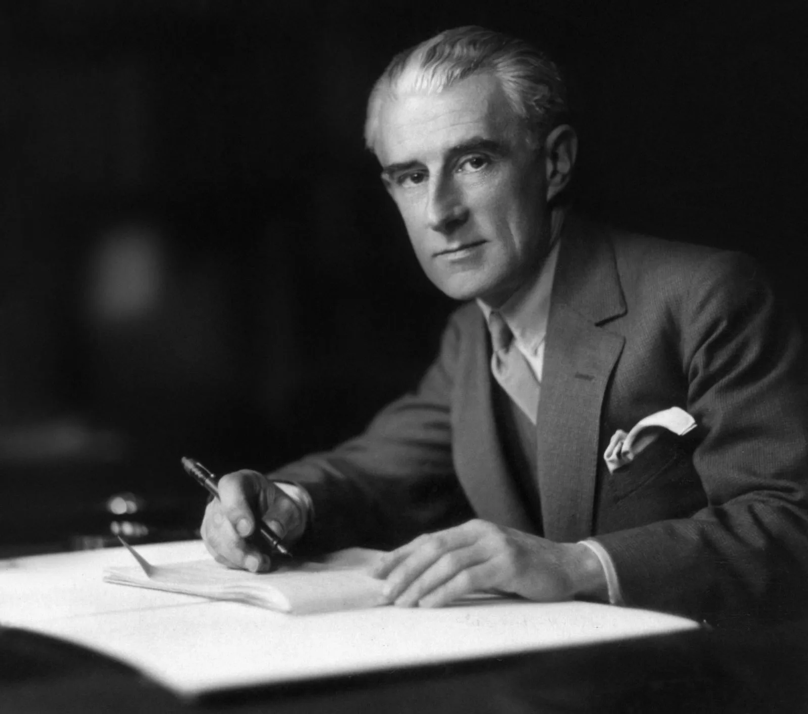
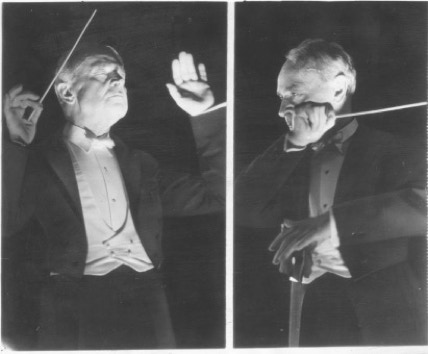
Maurice Ravel
Serge Koussevitzky
Mussorgsky composed Pictures at an Exhibition for solo piano. The first musician to arrange the work for orchestra was the Russian composer and conductor Mikhail Tushmalov. However, his version (first performed in 1891 and possibly produced as early as 1886 when he was a student of Rimsky-Korsakov) does not include the entire suite: Only seven of the ten "pictures" are present, leaving out "Gnomus", "Tuileries", and "Cattle", and all the Promenades are omitted except for the last one, which is used in place of the first. The first person to orchestrate the piece in its entirety was the Slovenian-born conductor and violinist Leo Funtek, who finished his version in 1922 while living and working in Finland. Over the years, no less than 28 composers/arrangers have arranged Pictures for various instrumentation schemes, from Leopold Stokowski to Emerson, Lake, and Palmer. The most famous and widely-performed version, by a very wide margin, is Maurice Ravel’s orchestration, commissioned by the legendary conductor Serge Koussevitzky in 1922.
The Original Piano Work
We are extraordinarily pleased and proud of our former Young Artist Competition winner and 2016 Italy tour soloist Misha Galant, who recently in 2024 performed at the Gina Bachauer International Piano Competition in Salt Lake City. Luckily for us, he performed Mussorgsky’s Pictures at an Exhibition! Here is his truly masterful interpretation of this incredible composition.
And Now For Something Completely Different
Emerson, Lake, and Palmer: Pictures at an Exhibition (1977)
Lorem ipsum dolor sit amet, consectetur adipiscing elit. Aliquam tincidunt lorem enim, eget